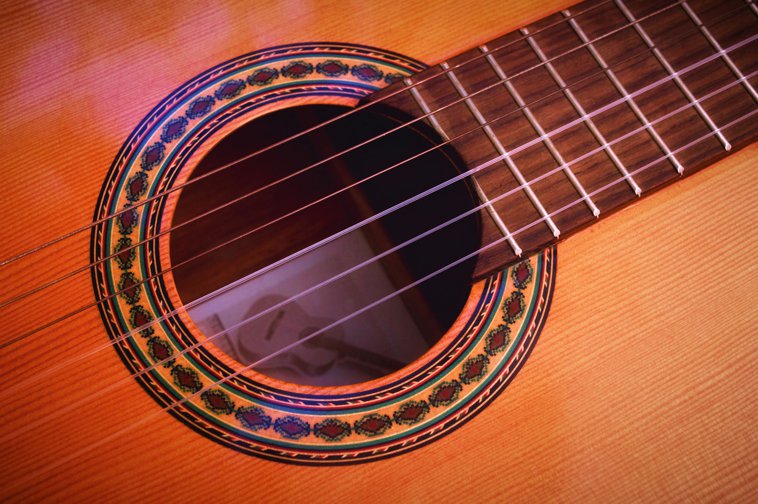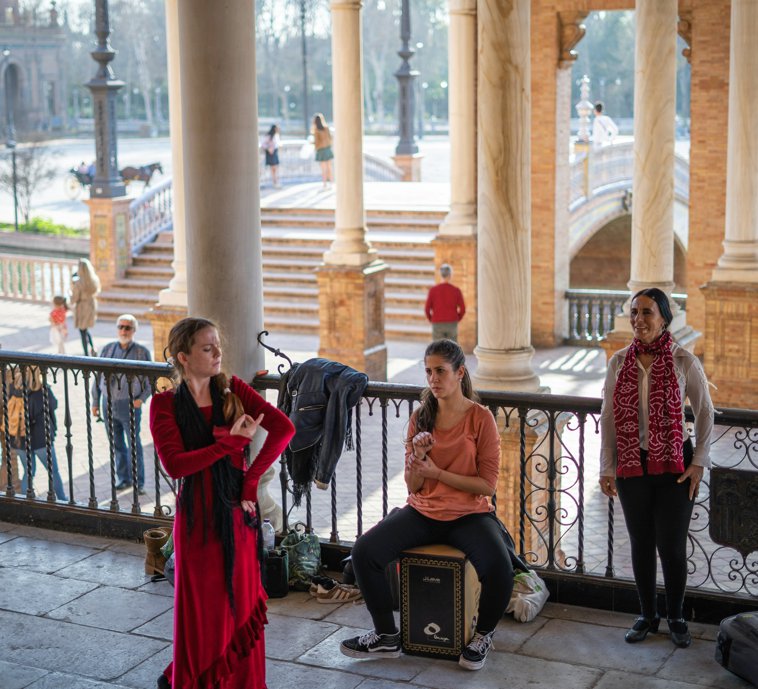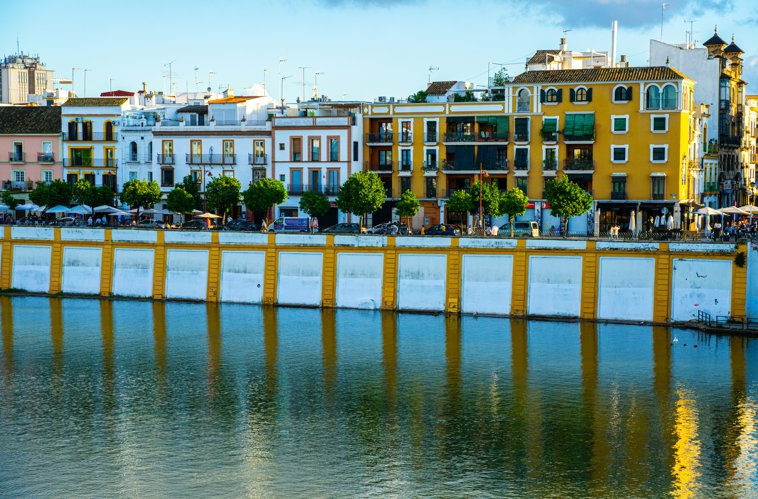Flamenco
Questions This Article Answers
What are the influences of flamenco?
Where was flamenco developed?
What does olé mean?
What does duende mean?
What is a tablao?
Why is it spelled bailaor?
Why is it spelled cantaor?
Why is it spelled tocaor?

Flamenco
Flamenco is a passionate, emotional, and expressive artform. It is an outlet for both joy and sorrow, passion and tragedy, virtuosity and solemnity.
Flamenco was developed in Andalucía(Andalusia), a region in southern España(Spain). Flamenco has its roots in a variety of cultural influences. Although it is mostly associated with gitanos(gypsies), flamenco was also influenced by the local españoles(Spaniards) as well as the moros(Moors) and the sefardíes(Sephardic Jews).
Before it gained widespread popularity, flamenco was mostly performed among families and friends. In these intimate juergas flamencas(flamenco sessions), artists could express their emotions with passion while the audience would accompany them with palmas(clapping), baile(dance), and jaleo(cheering on).
Flamenco rose to popularity in the mid-18th century when cantaores(singers), tocaores(guitar players), and bailaores(dancers) began performing at cafés cantantes(cafés with entertainment). Nowadays, flamenco can be found in tablaos(flamenco clubs), events, television, and theaters, but also in the streets and in family get-togethers.
Let’s learn about the cornerstones of flamenco: cante(singing), toque(playing), and baile(dancing).
Bailaor, Cantaor, and Tocaor
Have you noticed that the spelling of these words is different from the standard Spanish bailador(dancer), cantador(singer), and tocador(player)? The words bailaor(dancer), cantaor(singer), and tocaor(guitar player) are spelled that way to imitate the way they sound in the Southern Spanish accents. In practice, the words bailaor, cantaor, and tocaor are used almost exclusively to refer to flamenco artists.
Flamenco Singing
El cante(singing) was the first expression of flamenco music, to which the guitar was later added. Cante is often accompanied by the guitar and palmas, but cantaores may also sing a palo seco(without guitar accompaniment).
Flamenco singing is emotional and passionate and leaves room for improvisation and spontaneity. Cantaores frequently use a technique called melisma(vocal run), which consists of singing a melody on a single syllable. Guitar players must follow singers closely to provide the best accompaniment. Famous flamenco singers include Camarón de la Isla(Camarón de la Isla), Enrique Morente(Enrique Morente), Manolo Caracol(Manolo Caracol), Carmen Linares(Carmen Linares), and Lola Flores(Lola Flores).

Flamenco Music
The guitarra(guitar) is the quintessential flamenco instrument. People frequently accompany the guitar player with palmas. The cajón(cajón), an instrument originally from Perú(Peru), was incorporated into flamenco and it quickly gained acceptance. Modern flamenco musicians have experimented adding other instruments, such as the flauta(flute), bajo eléctrico(electric bass), or piano(piano).
The flamenco guitar is different from the classical guitar. The flamenco guitar is thinner, it sounds louder and brighter, and it has a golpeador(pickguard) that protects the wood when the guitarist performs a golpe(tap on the soundboard of the guitar). Similar to other non-academic music styles, flamenco music has been traditionally passed on orally. This resulted in flamenco developing techniques different from that of classical music, such as a diverse variety of rasgueos(strumming), the golpe, and the alzapúa(thumb technique). Famous flamenco guitar players include Sabicas(Sabicas), Paco de Lucía(Paco de Lucía), Tomatito(Tomatito), and Vicente Amigo(Vicente Amigo).
Flamenco Dance
 Flamenco bailaores are on par with the cantaores and tocaores. Their dance ranges from solemn braceo(arm work) to rapid zapateado(foot stamping). As they rhythmically stamp their feet to the music on the tablao(wooden floor for dancing), the performance of the bailaores often builds up towards the end of the piece, culminating in a phenomenal finale. Famous flamenco dancers include Joaquín Cortés(Joaquín Cortés), Farruquito(Farruquito), Lola Flores(Lola Flores), La Niña de los Peines(La Niña de los Peines), and Carmen Amaya(Carmen Amaya).
Flamenco bailaores are on par with the cantaores and tocaores. Their dance ranges from solemn braceo(arm work) to rapid zapateado(foot stamping). As they rhythmically stamp their feet to the music on the tablao(wooden floor for dancing), the performance of the bailaores often builds up towards the end of the piece, culminating in a phenomenal finale. Famous flamenco dancers include Joaquín Cortés(Joaquín Cortés), Farruquito(Farruquito), Lola Flores(Lola Flores), La Niña de los Peines(La Niña de los Peines), and Carmen Amaya(Carmen Amaya).
Palos Flamencos
In flamenco music, the term palo(style) is used to describe the different styles. Each palo has its own characteristics with regard to tempo(tempo), compás(time signature), armonía(harmony), and other elements. Here’s a list of some of the most significant palos.
- alegría(alegría)
- bulería(bulería)
- cantiña(cantiña)
- caña(caña)
- cartagenera(cartagenera)
- fandango(fandango)
- fandango de Huelva(fandango de Huelva)
- farruca(farruca)
- granaína(granaína)
- jaleo(jaleo)
- malagueña(malagueña)
- minera(minera)
- murciana(murciana)
- petenera(petenera)
- rondeña(rondeña)
- seguiriya(seguiriya)
- sevillana(sevillana)
- soleá(soleá)
- tango(tango)
- taranta(taranta)
- tiento(tiento)
- verdial(verdial)
- zambra(zambra)
- zapateado(zapateado)
The two-way exchange between España and its colonies in América Latina(Latin America) also had an influence on flamenco. The following palos are called de ida y vuelta(back and forth). This term is used to talk about the styles that traveled back and forth across the ocean and underwent stylistic changes.
| examples |
|---|

Vocabulary
Finally, here's a word list related to flamenco.
| examples |
|---|
Learn more about Spain in the following articles:














